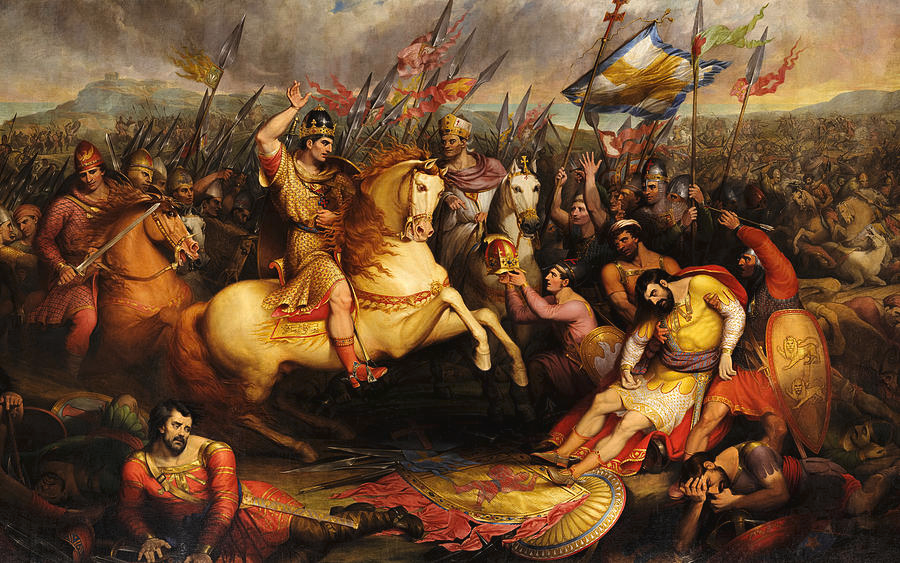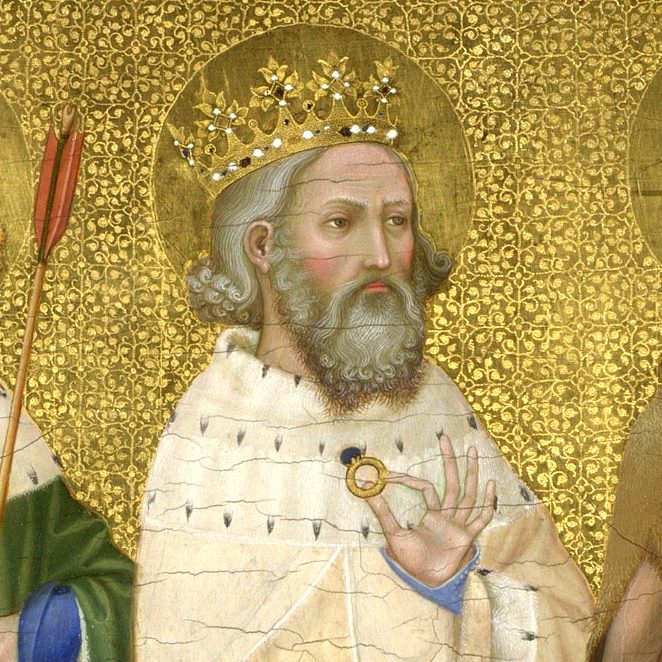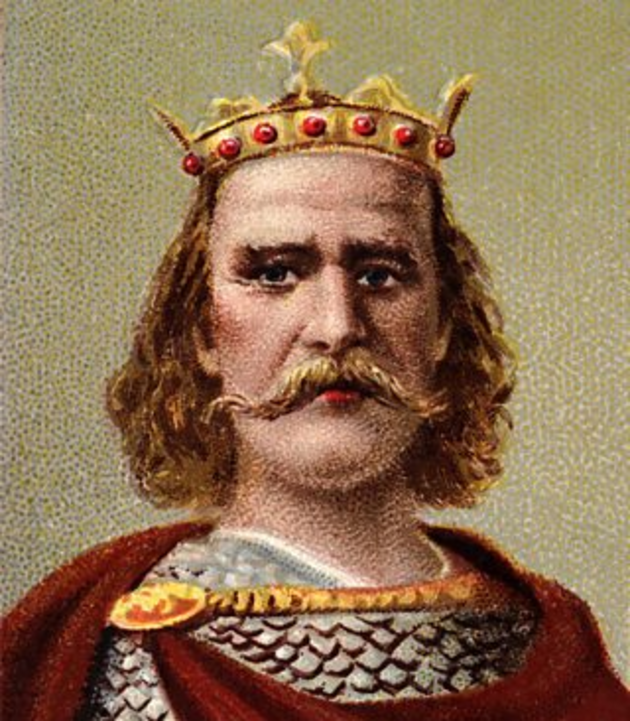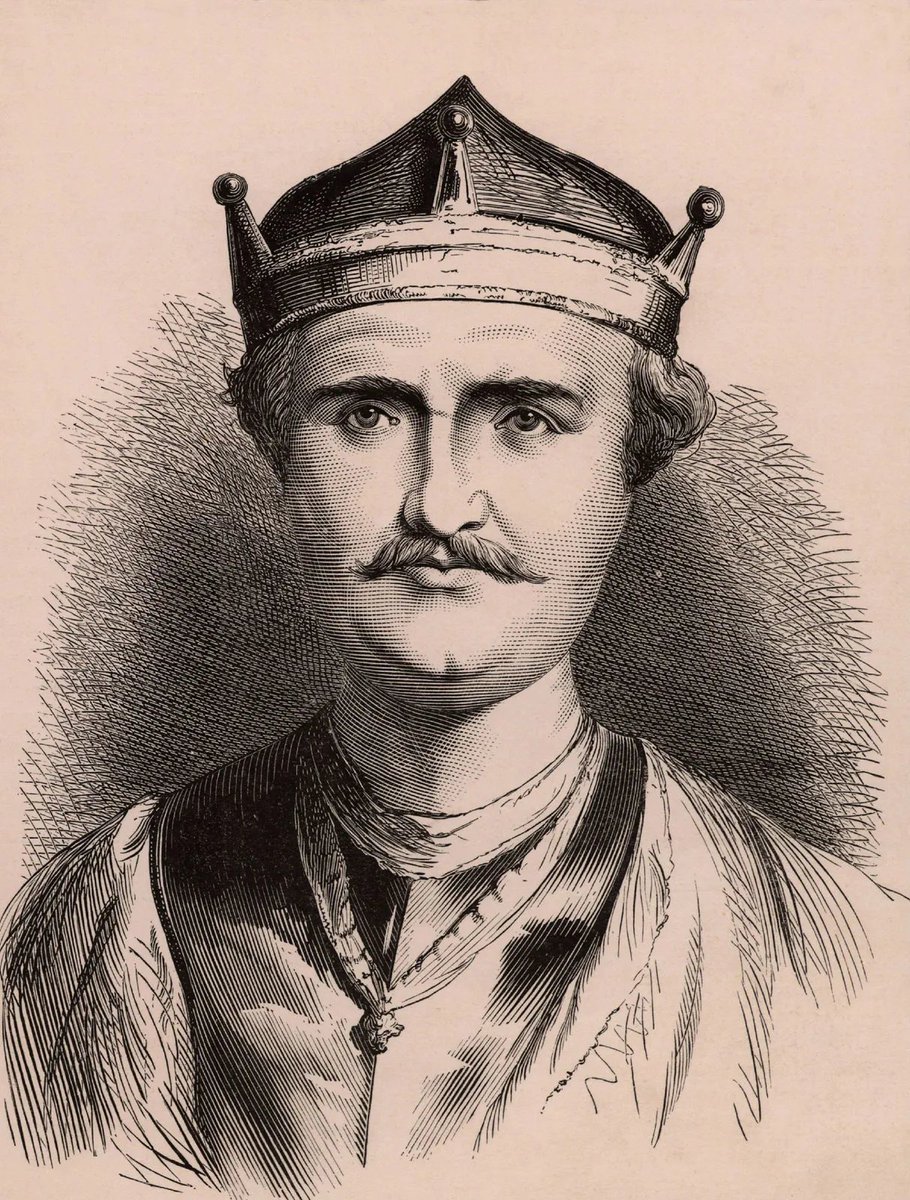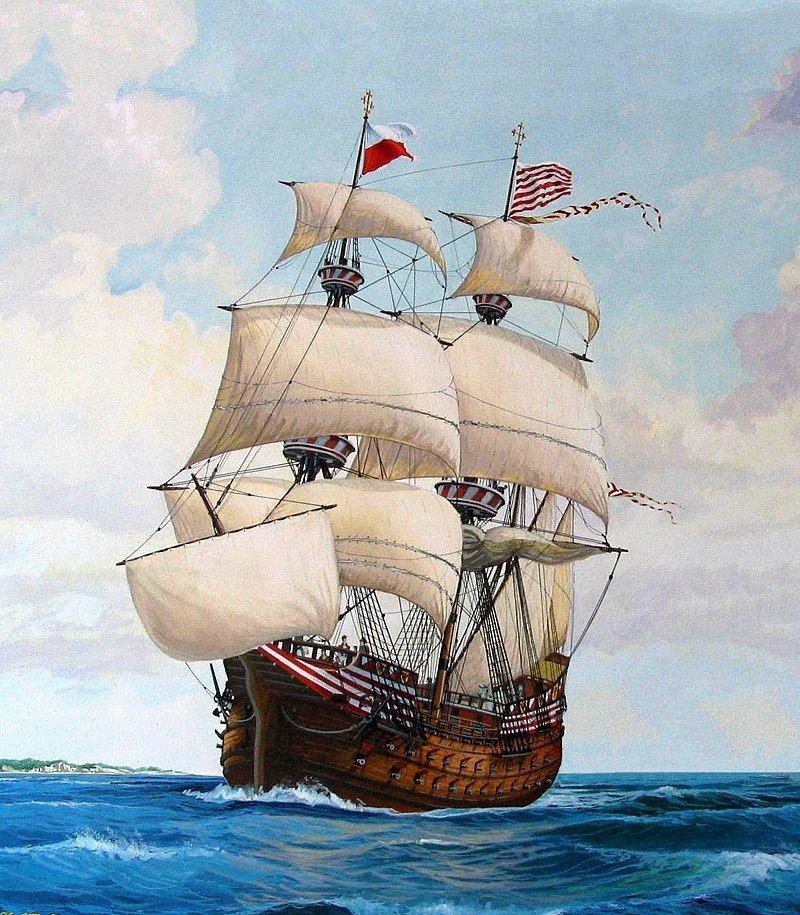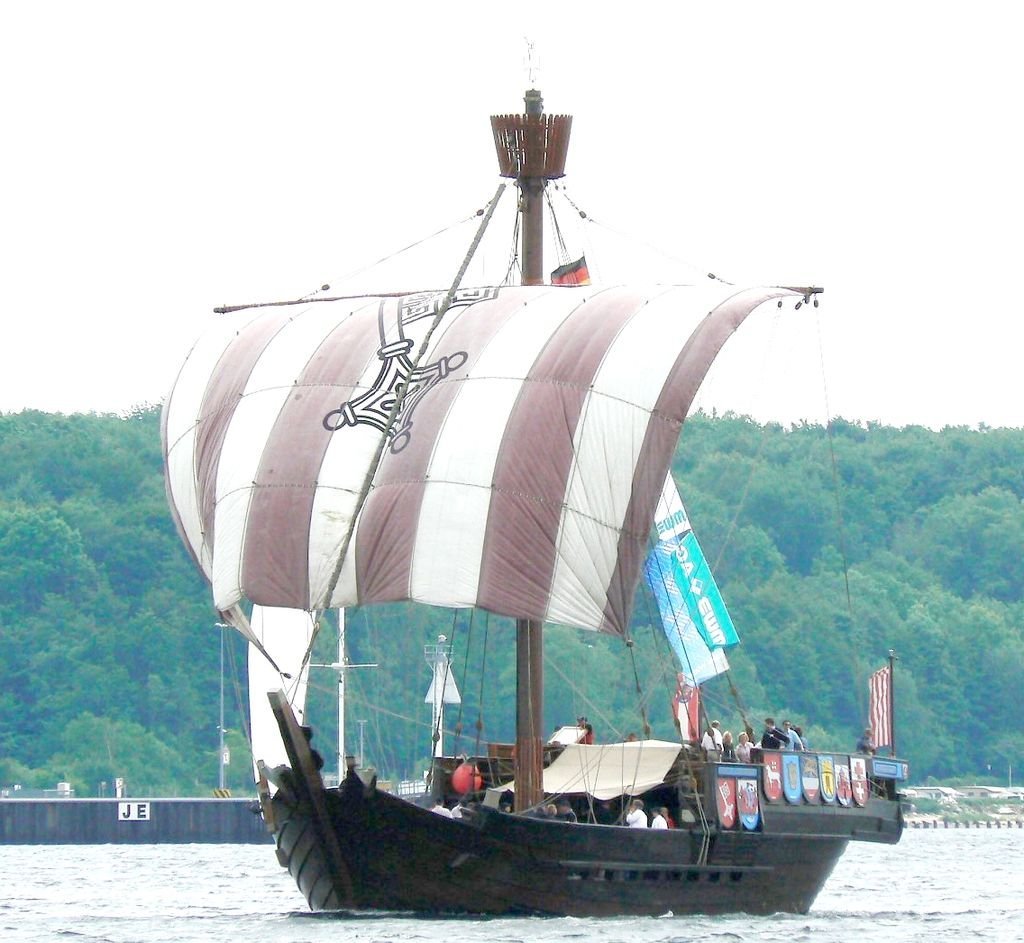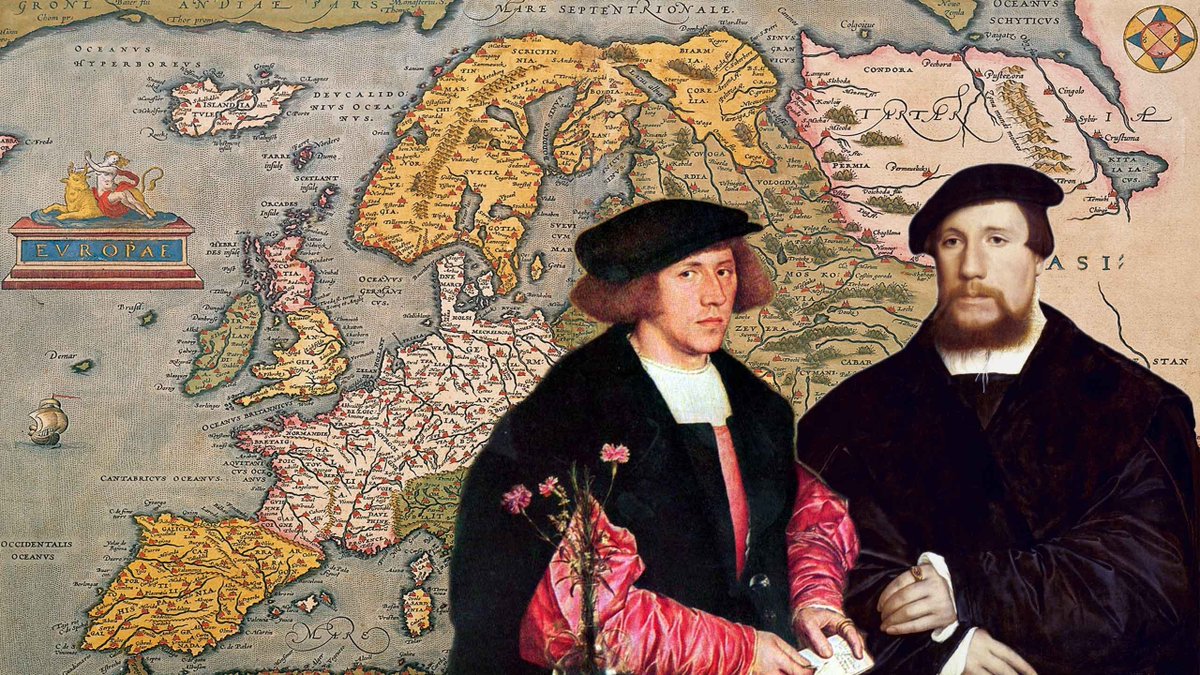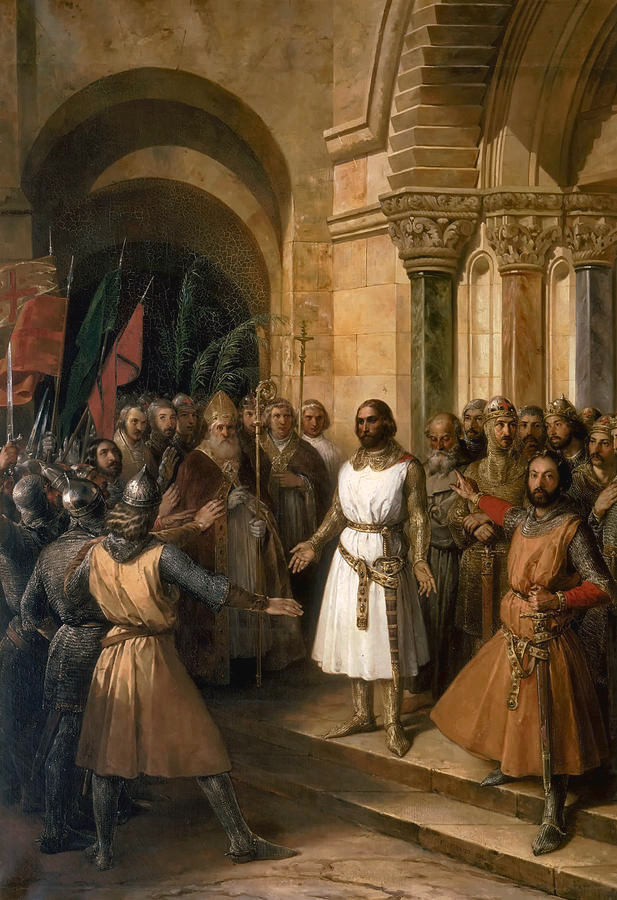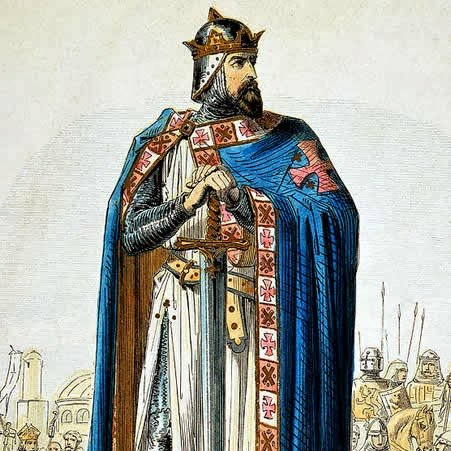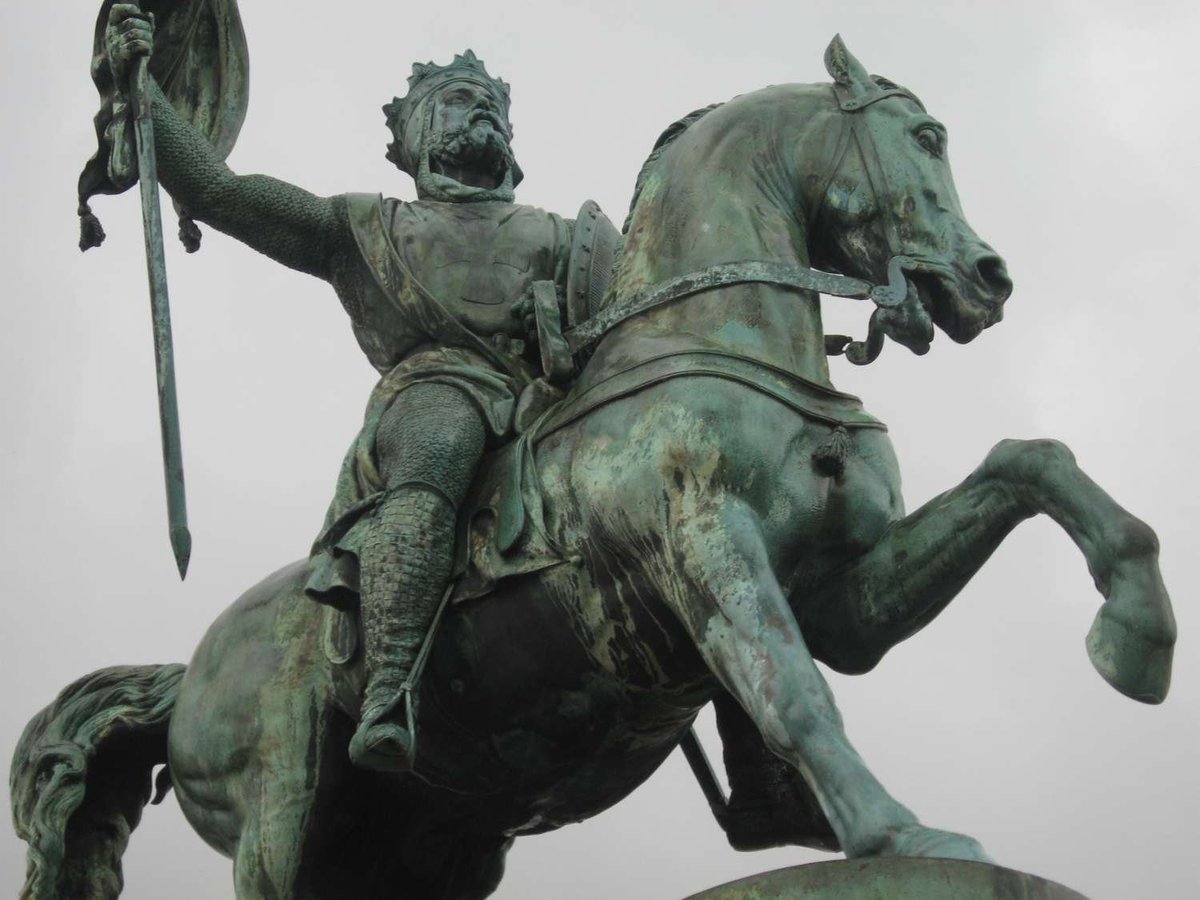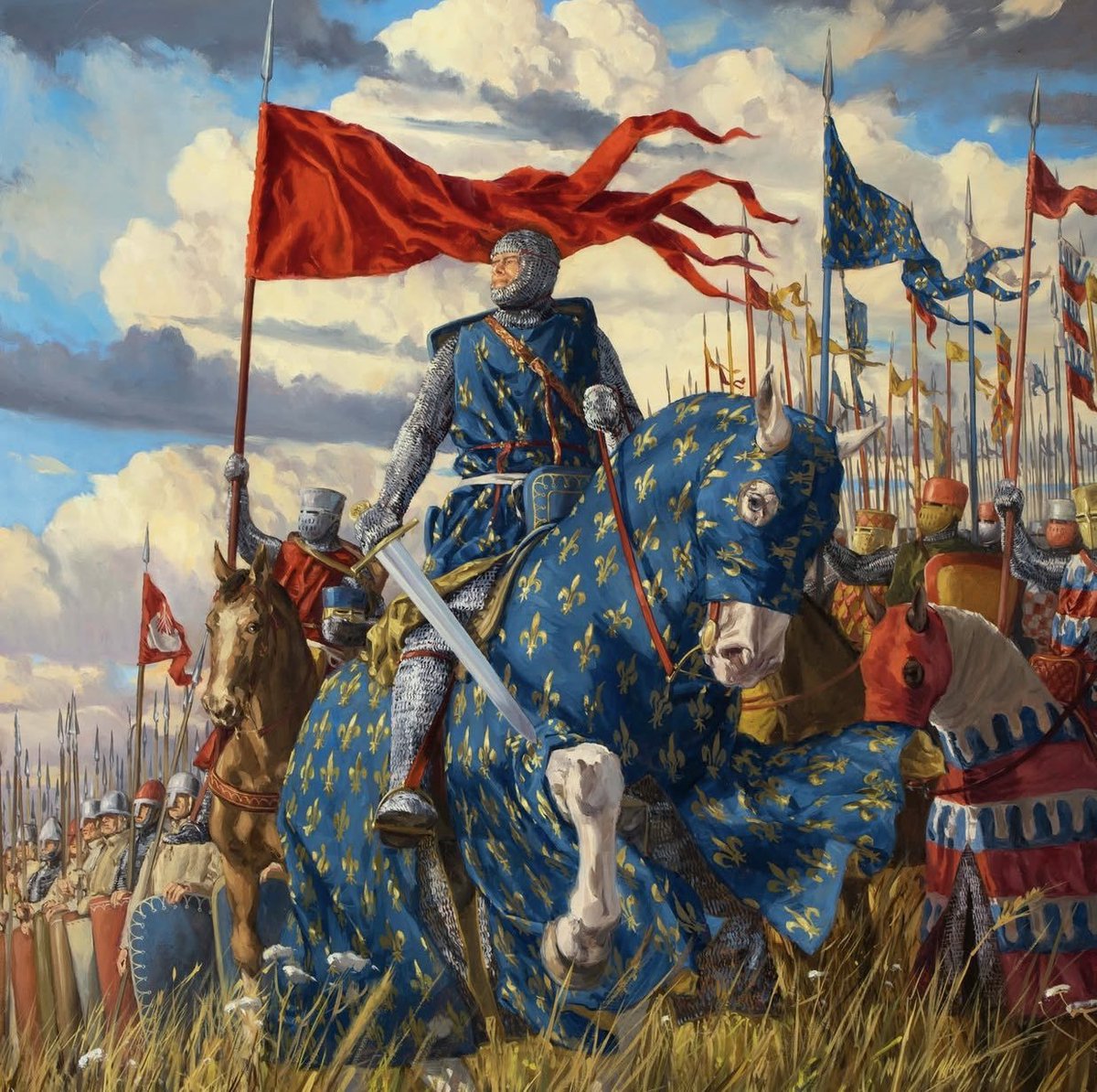The Battle of Agincourt. One of the most famous battles of the Middle Ages. A tremendous underdog victory of the valiant English forces that would cement King Henry V into the records of history.
Here is the story of the battle. 🧵

Here is the story of the battle. 🧵

In 1415 following failed negotiations with the French, King Henry V of England would claim the title of King of France through his grandfather Edward III and invade France. 

Henry told the French he would renounce his claim if the French paid 1.6 million crowns outstanding from John II's ransom, who was captured during the Battle of Poitiers in 1356. 

As well as King John II's ransom fee, the English also wanted the French to concede the lands of Anjou, Brittany, Flanders, Normandy, and Touraine, as well as Aquitaine and for Henry to marry Catherine, daughter of Charles VI. 

Negotiations would fall through after the English claimed the French mocked their claims and personally insulted King Henry himself.
Henry asked the Great Council to sanction a war with France and they would agree.
Henry asked the Great Council to sanction a war with France and they would agree.

King Henry's army would land in northern France on August 13th 1415. The King would depart from Southampton. It is claimed Henry's fleet numbered around 1,500 but was most likely far smaller. 

King Henry's campaign would begin at the port of Harfleur with an army approximately 12,000 men and 20,000 horses strong.
The siege would take longer than expected, many English men died from disease but Harfleur would surrender on the 22nd of September.
The siege would take longer than expected, many English men died from disease but Harfleur would surrender on the 22nd of September.

The English army would depart on October 8th to the English stronghold of Calais 9,000 men strong. Henry would maneuver to deliberately provoke the Dauphin of France, Louis.
Louis was the son of King Charles VI of France and failed to respond to King Henry's challenge of combat
Louis was the son of King Charles VI of France and failed to respond to King Henry's challenge of combat

The French would (for a short time) block King Henry's northern advance by blocking the River Somme.
Henry would move south and cross the Somme south of Péronne, at Béthencourt and Voyennes.
Henry would move south and cross the Somme south of Péronne, at Béthencourt and Voyennes.

Hesitant to force a battle, the French called a semonce des nobles, summoning local nobles to join the French forces.
On October 24th, the armies would face each other for combat, the French would decline and opt to wait for more men to arrive.
On October 24th, the armies would face each other for combat, the French would decline and opt to wait for more men to arrive.

The English at this point were low on food and supplies, many men were suffering from dysentery, marched 260 miles over two and a half weeks.
The English were tired, the French outnumbered them and their men-at-arms had superior equipment.
The English were tired, the French outnumbered them and their men-at-arms had superior equipment.

On October 25th the armies would gather and prepare for combat. The French led by Constable of France Charles d'Albret had an army of about 14,000 to 15,000.
King Henry V's forces numbered about 6,000 to 8,000 men. Outnumbering the English about 2 to 1.
King Henry V's forces numbered about 6,000 to 8,000 men. Outnumbering the English about 2 to 1.

Henry would deploy his forces into three groups. The center force would be led by King Henry himself.
On his right would be Edward Duke of York, the left led by Baron Thomas Camoys and the nearly 7,000 longbowmen on the would be led by Sir Thomas Erpingham.
On his right would be Edward Duke of York, the left led by Baron Thomas Camoys and the nearly 7,000 longbowmen on the would be led by Sir Thomas Erpingham.

The English men-at-arms wearing plate and mail armor stood shoulder to shoulder four men deep.
On the flanks of the army the English and Welsh archers would be ordered by King Henry to carve wooden stakes, one for each man.
On the flanks of the army the English and Welsh archers would be ordered by King Henry to carve wooden stakes, one for each man.

King Henry gave a speech to his men before battle. Telling them about great victories the English had won over France.
The Burgundian sources claim King Henry told his men that the French had boasted that they would cut off two fingers from the right hand of every archer.
The Burgundian sources claim King Henry told his men that the French had boasted that they would cut off two fingers from the right hand of every archer.

The French forces of about 10,000 men-at-arms and 4,000-5,000 footmen included archers and crossbowmen.
They deployed two main groups, a frontline vanguard and the main battle formation behind them. They possessed an elite cavalry force in front to break the enemy formation.
They deployed two main groups, a frontline vanguard and the main battle formation behind them. They possessed an elite cavalry force in front to break the enemy formation.

The French possessed a secondary cavalry force to attack the English rear with it's servants and baggage train. 

The days leading up to the battle were characterized by heavy rains, turning the recently plowed fields of Agincourt into a muddy, soggy mess. This would be how the English claimed victory. 

The battle would begin and the disorganized French cavalry charged towards the English archers.
Unable to charge through the stakes and unable to outflank the archers, the attempt was a disaster and many of the cavalry's horses were cut down by arrows causing disarray.
Unable to charge through the stakes and unable to outflank the archers, the attempt was a disaster and many of the cavalry's horses were cut down by arrows causing disarray.

The heavy plate armor of the French knights and men-at-arms allowed them to advance while under fire. The French monk of Saint Denis described it as a "terrifying hail of arrow shot".
(Art by wraithdt)
(Art by wraithdt)

The French soldiers that survived the slog through the mud and corpses reached the English line, when the archers ran out of arrows they grabbed their mallets, swords and hatchets and entered the fray. 

By the time they had engaged in a melee with the main English force, the French knights and men-at-arms could "scarcely lift their weapons".
Exhausted from the arrow impacts, slogging in the mud, the heat and difficulty breathing, the French could barely fight anymore.
Exhausted from the arrow impacts, slogging in the mud, the heat and difficulty breathing, the French could barely fight anymore.

It is suggested that many French soldiers died by suffocating in their armor or even drowning in the muddy field. The fighting lasted three hours. King Henry fought hand to hand according to English contemporary accounts. 

The battle would end with an incredible, odds defying victory from the English. Charles d'Albret, Constable of France would be killed in battle, along with John I, Duke of Alençon.
About 600 English soldiers would die and about 6,000 French would die, many of which were nobles.
About 600 English soldiers would die and about 6,000 French would die, many of which were nobles.

Henry would order the execution of all French prisoners aside from a select few who would be ransomed. A catastrophic defeat for France.
It strengthened Henry V's position in France and led to the signing of the Treaty of Troyes in 1420, which recognized Henry as the French heir
It strengthened Henry V's position in France and led to the signing of the Treaty of Troyes in 1420, which recognized Henry as the French heir

• • •
Missing some Tweet in this thread? You can try to
force a refresh





